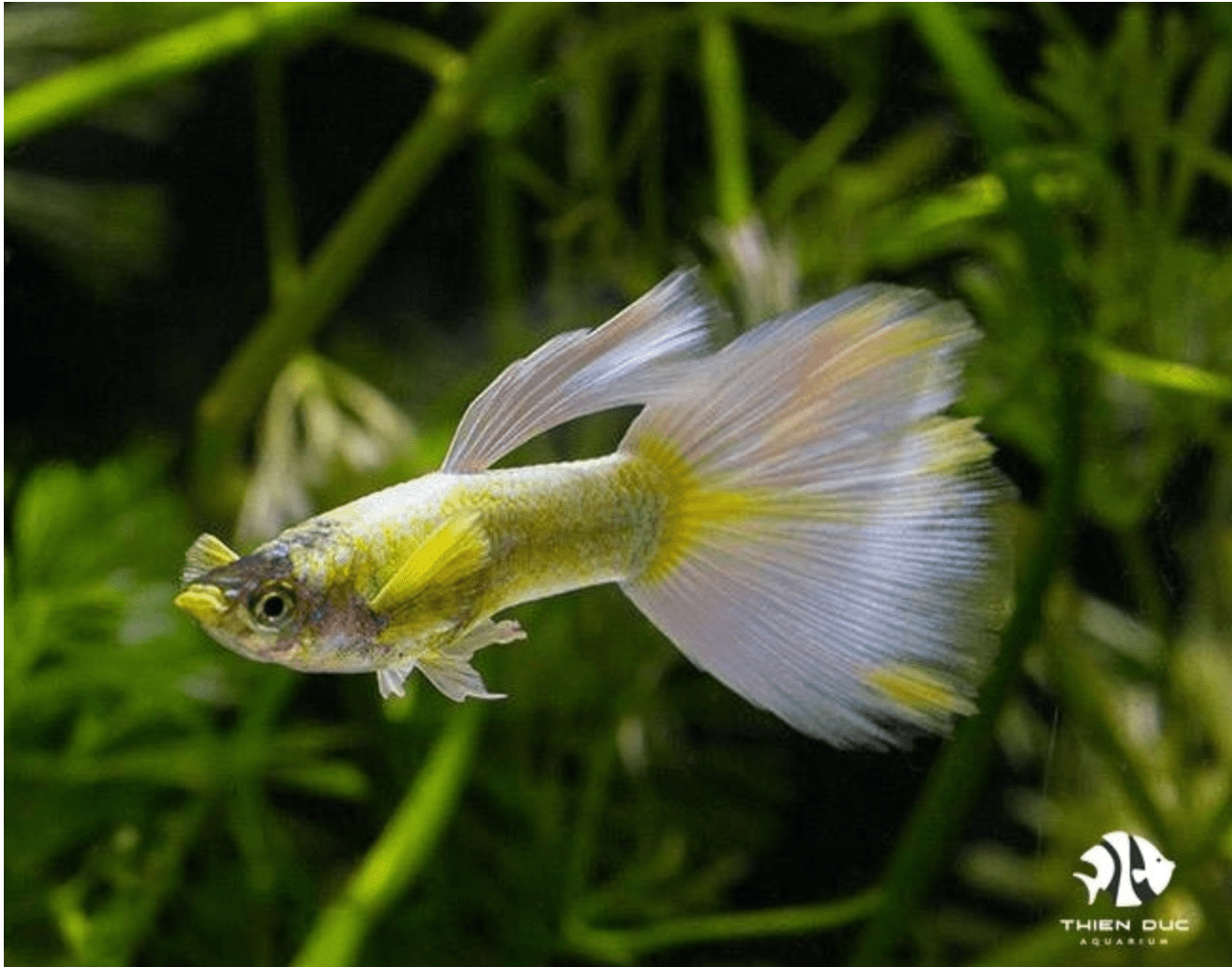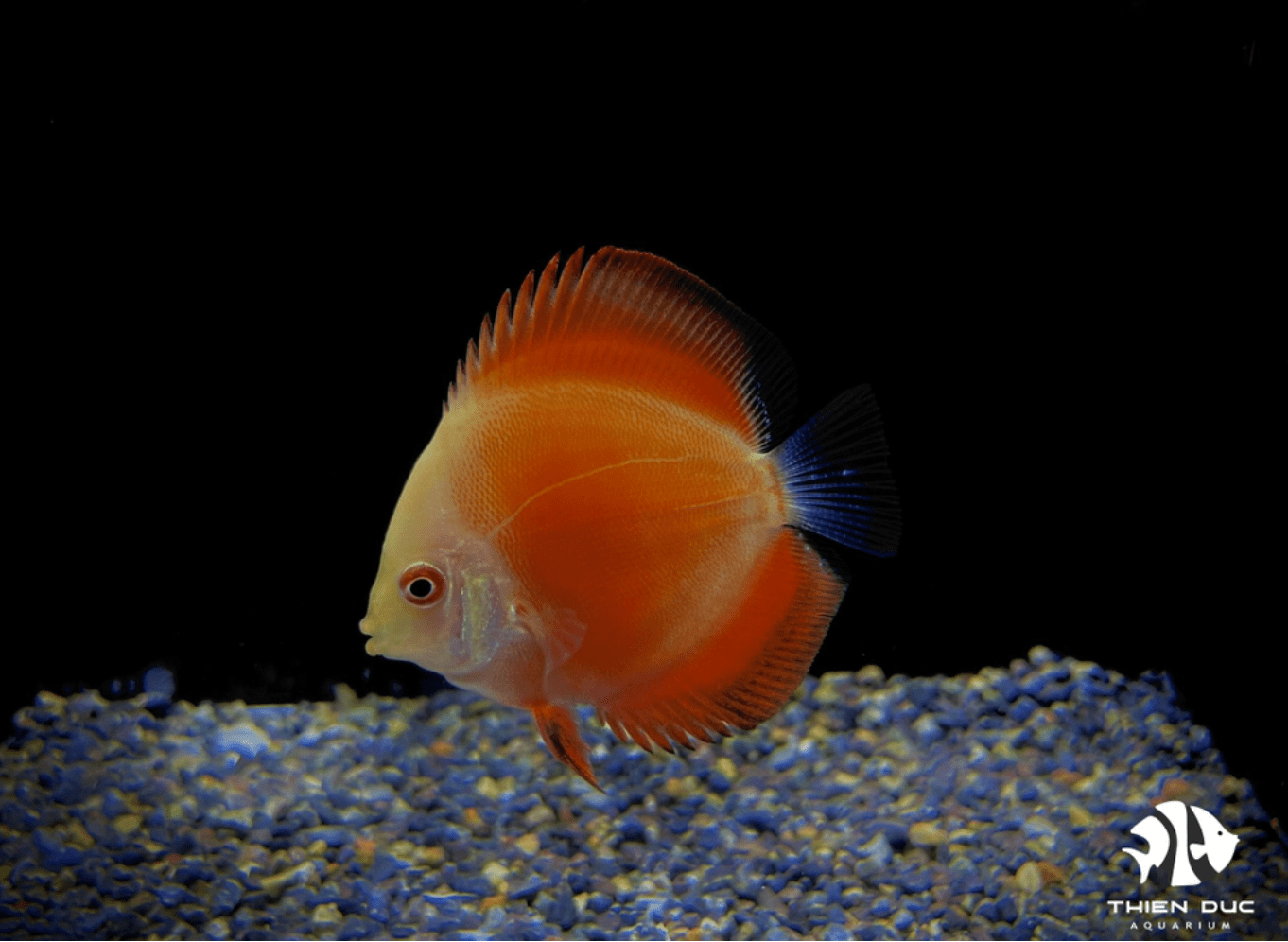Betta Fish Health - How to Identify and Prevent Diseases
The Betta fish, or Siamese Fighting Fish, is a jewel of the freshwater world, prized by aquarists across Europe for its vibrant colours and interactive personality. While resilient, their health is delicate and directly depends on the quality of their care.
As a leading Vietnamese exporter of ornamental fish to the EU since 2012, THIENDUC AQUARIUM knows that good health starts with knowledge. This guide will empower you to prevent common diseases and identify early symptoms, because your commitment is the foundation of good Betta Fish Health.
The Prevention of Disease: The Basis of Health
In fishkeeping, an ounce of prevention is truly worth a pound of cure. Creating a stable, clean, and enriching environment is the single most effective way to ensure your Betta remains disease-free. A proactive approach is the cornerstone of sustainable Betta Fish Health, minimizing stress and allowing your fish’s natural immune system to function at its peak.
The Ideal Habitat
The environment your Betta lives in is the most critical factor influencing its overall well-being.
-
Tank Size: The myth of a Betta thriving in a small bowl or vase is a persistent and harmful one. These tiny containers are impossible to heat, difficult to filter, and quickly accumulate toxic waste. For a Betta to truly thrive, a minimum of 5 gallons (approximately 19 liters) is essential. This larger volume of water is more stable, provides space for swimming, and allows for a healthier, more balanced ecosystem.
-
Filtration: There is no negotiating a gentle filter. It serves as the tank's life support system, housing beneficial bacteria that break down harmful waste (ammonia and nitrite). Look for filters with an adjustable flow rate, as Bettas dislike strong currents due to their long fins. A healthy tank is one that is clean.
-
Heater: Bettas are tropical fish native to the warm waters of Southeast Asia. Cold water is a primary source of stress, which suppresses their immune system and makes them highly susceptible to illness. A reliable aquarium heater that maintains a stable temperature between 78-82°F (25-28°C) is crucial for their survival and vitality.

Pristine Water Quality
You cannot see the most significant threats to your Betta's health. Ammonia, nitrite, and nitrate are invisible killers that build up from fish waste and uneaten food.
-
The Nitrogen Cycle: In simple terms, this is the biological process where beneficial bacteria convert highly toxic ammonia into less toxic nitrite, and then into the much safer nitrate. A "cycled" tank has an established colony of these bacteria.
-
Water Changes: Even in a filtered tank, nitrates will accumulate. The best way to remove them is through regular partial water changes. For a 5-gallon tank, a 25% water change every week is a good baseline.
-
Water Conditioner: Tap water contains chlorine or chloramine, chemicals that are lethal to fish and beneficial bacteria. Always treat new water with a quality water conditioner before adding it to the aquarium.
-
Water Testing: For hobbyists in the EU who demand the highest standards of care, a liquid water testing kit is an invaluable tool. Regularly testing for ammonia, nitrite, and nitrate allows you to understand the conditions of your tank and catch problems before they affect your fish. This is a proactive step towards excellent Betta Fish Health.
A Balanced Diet
A proper diet fuels your Betta’s immune system and enhances its vibrant colours.
-
Staple Food: Choose a high-quality Betta pellet or flake specifically formulated with high protein content. Avoid generic fish foods.
-
Variety: A varied diet is key. Supplement the staple pellets with frozen or live foods like daphnia, brine shrimp, and bloodworms a few times a week. This provides enrichment and a broader range of nutrients.
-
Feeding Schedule: Overfeeding is one of the most common mistakes owners make. It leads to bloating, swim bladder issues, and pollutes the water. Feed your Betta only what it can consume in about a minute, once or twice a day. The size of a Betta's stomach is comparable to that of its eye.

A Low-Stress Environment
Stress is a silent killer that compromises Betta Fish Health.
-
Enrichment: Bettas are intelligent and appreciate a stimulating environment. Provide broad-leaf silk or live plants for them to rest on, as well as caves or other decorations for hiding. This makes them feel safer.
-
Tank Mates: Be extremely cautious when selecting tank mates. Avoid fish known for nipping fins (like many tetras and barbs) and other aggressive species. Peaceful bottom-dwellers like snails or certain small corydoras can be suitable, but always research compatibility.
-
Quarantine: At THIENDUC AQUARIUM, all our fish, including our wild-caught specimens from Vietnam and neighbouring regions, undergo strict health protocols. We urge you to do the same. Any new fish or plant should be quarantined in a separate tank for 4-6 weeks before being introduced to your main aquarium. This prevents the introduction of parasites and diseases.
How to Identify Common Betta Diseases
Even with the best care, sickness can occur. Early detection is the key. A daily observation of your fish’s behaviour and appearance is the best diagnostic tool you have.
Fungal Infections (e.g., Cotton Wool Disease)
-
Symptoms: You will notice distinct white, fuzzy, cotton-like patches on the fish’s body, head, or fins. The fish may become lethargic.
-
Causes: Fungal spores are present in most aquariums. They typically only affect fish with a compromised immune system, often as a secondary infection on an existing injury or in tanks with poor water quality.
Bacterial Infections
-
Fin and Tail Rot:
-
Symptoms: This condition presents as fins and/or a tail that appear ragged, frayed, or discolored (often with blackened edges). In advanced stages, the fins are literally eaten away and recede towards the body.
-
Causes: This is almost always a direct result of poor water conditions, particularly high levels of ammonia and nitrite, which create a stressful environment where bacteria can thrive. Maintaining water quality is vital for Betta Fish Health.
-
-
Popeye:
-
Symptoms: One or both of the fish's eyes will appear swollen, bulging, or protruding from their sockets. The eye may look cloudy.
-
Causes: Popeye is often a symptom of an internal bacterial infection, frequently linked to persistently poor water conditions.
-

Parasitic Infections
-
Ich (Ichthyophthirius multifiliis):
-
Symptoms: The most obvious sign is the appearance of tiny white spots, like grains of salt, sprinkled over the fish's body and fins. The fish may also be seen flashing or rubbing its body against objects in an attempt to scratch the parasites off.
-
Causes: Ich is a highly contagious parasite, often introduced into an aquarium via new fish, plants, or even contaminated water. This is why quarantine is so crucial for Betta Fish Health.
-
-
Velvet (Oodinium):
-
Symptoms: This parasite causes a fine, gold or rust-coloured dust to appear on the fish's body. It can be difficult to see in normal light; shining a flashlight on the fish in a dark room often reveals the shimmering film.
-
Causes: Like Ich, this parasite can be introduced on new fish. It thrives in aquariums with poor water quality and fluctuating temperatures.
-
Other Common Ailments
-
Swim Bladder Disease:
-
Symptoms: This is a disorder affecting the fish's buoyancy. Symptoms include an inability to swim properly, floating uncontrollably to the top, sinking to the bottom, or swimming on its side or upside down.
-
Causes: The most common cause is overfeeding and constipation, which leads to bloating that puts pressure on the swim bladder organ. It can sometimes be caused by an internal infection. Careful feeding is a simple way to protect Betta Fish Health.
-
-
Dropsy:
-
Symptoms: This is not a disease itself, but a symptom of severe internal organ failure. The fish will exhibit extreme bloating, and its scales will protrude outwards, giving it a characteristic "pinecone" appearance.
-
Note: The prognosis for Dropsy is unfortunately very poor.
-
Causes: It is typically caused by a severe internal bacterial infection that leads to fluid buildup and organ failure, often in fish already weakened by chronic stress and poor conditions.
-
Basic Treatment Principles
When you identify a problem, act calmly and methodically.
-
Quarantine First: Immediately move the sick fish to a separate, smaller "hospital tank" (2.5-5 gallons is ideal). This protects any tank mates and allows you to treat the fish without harming the beneficial bacteria or live plants in your main aquarium.
-
Clean Water is Medicine: The first and most important step in any treatment is to ensure the fish is in pristine, warm water. A large water change is often the best initial response.
-
Aquarium Salt: Pure aquarium salt (not table salt) can be used as a therapeutic bath or a low-dose treatment in the hospital tank. It helps with gill function, reduces stress, and can treat some mild external parasites and infections.
-
Medications: If the condition worsens, specific over-the-counter antifungal, antibacterial, or anti-parasitic medications may be necessary. Always diagnose the illness as accurately as possible before medicating, and follow the package directions precisely. A strong foundation in preventative Betta Fish Health reduces the need for these measures.
-
When to Seek Expert Advice: For serious conditions or if you are unsure of a diagnosis, consulting with an aquatic veterinarian or a highly experienced aquarist is the best course of action.
Conclusion
Your Betta's quality of life depends on you. The pillars of Betta Fish Health are simple: a proper heated tank, clean water, a quality diet, and a stress-free environment. Focusing on these preventative measures is the best way to avoid disease.
At THIENDUC AQUARIUM, we are committed to providing our European partners with healthy, vibrant fish. Your observant care is the final, crucial component in ensuring a long, happy life for your Betta, making excellent Betta Fish Health a shared goal.
For inquiries about our wholesale freshwater ornamental fish, please reach out.
Contact Information:
-
Address: 57 Le Thi Sieng, Tan Thong Hoi, Cu Chi, Ho Chi Minh City, Viet Nam
-
Mobile: +84903912501
-
Office: +84982577871
-
Email: thien@thienducaquarium.com










